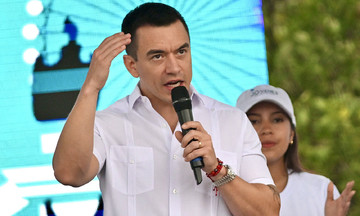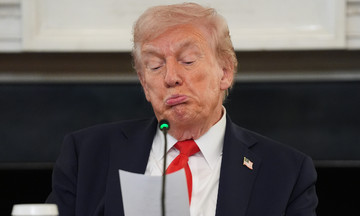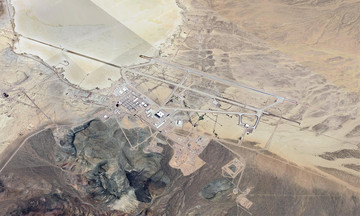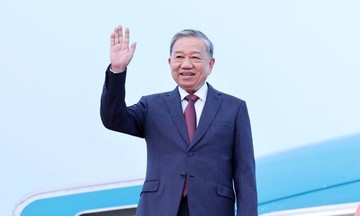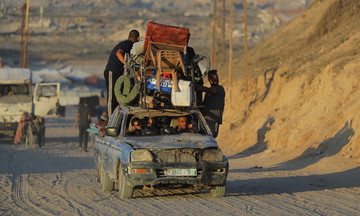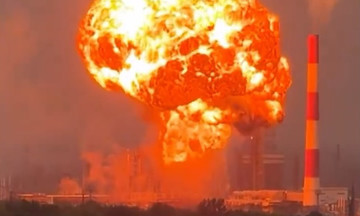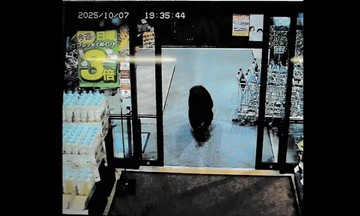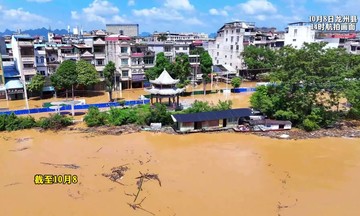Winter is approaching in Ukraine, bringing with it the fear of Russian attacks on energy infrastructure that could plunge millions into darkness and cold.
However, Ukraine has also intensified its response in recent months, using a fleet of domestically produced unmanned aerial vehicles (UAVs) to strike a series of oil and gas facilities within Russia, causing damage described by Russian officials as "very significant".
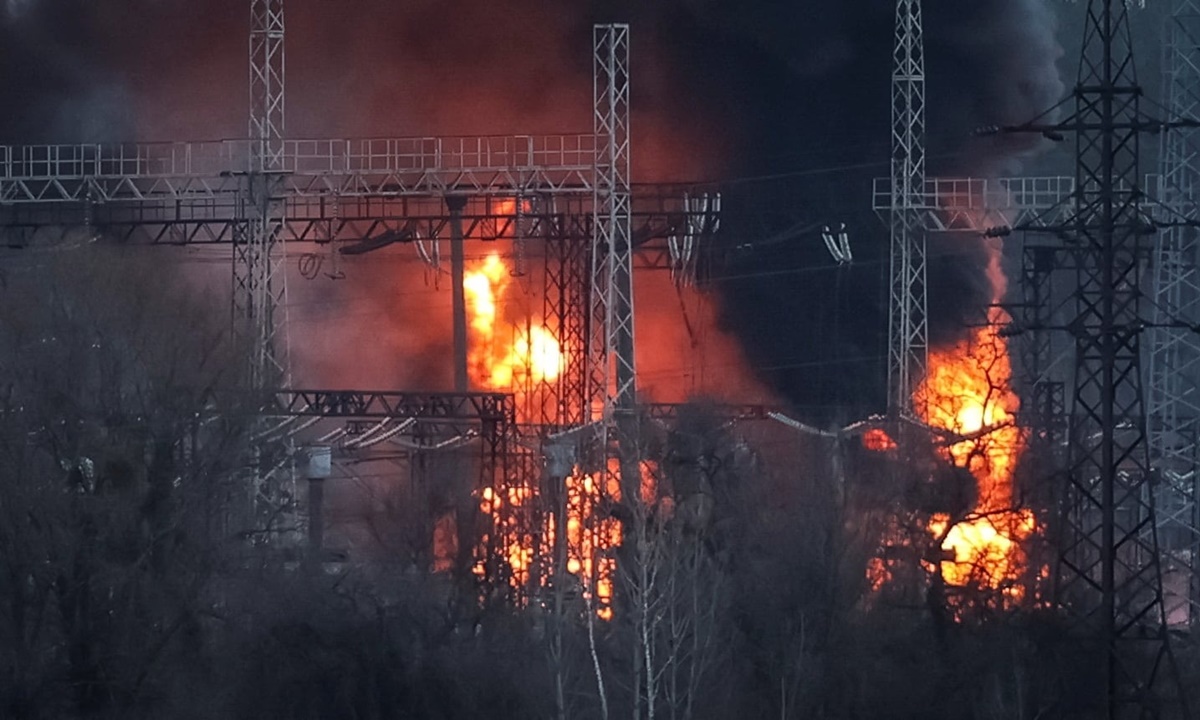 |
Smoke billows from a high-voltage power line at the scene of a Russian missile strike in Kharkov, Ukraine, 3/2024. Photo: Reuters |
Smoke billows from a high-voltage power line at the scene of a Russian missile strike in Kharkov, Ukraine, 3/2024. Photo: Reuters
Kyiv and Moscow initially agreed to a month-long "energy infrastructure attack ceasefire" at the request of US President Donald Trump. But that is now a thing of the past, as Ukrainian and Russian forces are increasingly exchanging blows, constantly attacking each other's strategic energy facilities.
On 18/9, Ukrainian UAVs attacked Gazprom's Neftekhim Salavat petrochemical plant in Bashkortostan, central Russia. Ukrainian security services said the UAVs hit the center of the plant, causing a "large fire". The governor of Bashkortostan confirmed the incident but said only that the damage was being assessed.
On the same day, Ukrainian special forces claimed to have attacked one of Russia's largest oil refineries in Volgograd, southern Russia, disrupting production. Moscow has not commented.
Two days later, Ukrainian UAVs attacked oil refineries in Saratov and Novokuibyshevsk. The Russian Ministry of Defense and local authorities confirmed the information, while residents reported hearing explosions and seeing smoke rising from the two facilities.
For its part, the Russian military, bolstered by a seemingly endless supply of UAVs, is stepping up attacks on the Ukrainian power grid, a frequent target. However, a concerning development for Ukrainian officials and experts is Russia's current targeting of gas facilities, the backbone of the country's winter heating system.
Ukrainian officials maintain they have sufficient gas reserves to get through the coming winter if it is as mild as last year, and have gained enough experience from previous Russian air campaigns to ensure the maintenance of both the heating system and the power grid during the winter.
However, many fear that the increasing frequency and intensity of Russian attacks will eventually overwhelm Ukraine's air defenses, causing enough damage to cripple key elements of the country's energy infrastructure. Russia is currently using hundreds of UAVs and dozens of missiles in its nightly attacks, and these numbers are increasing.
"They target our facilities every day, the question is just which plant and how much damage," said Maxim Timchenko, CEO of DTEK, Ukraine's largest private energy company.
"If Russia launches 600, 700, or 800 UAVs, no one can guarantee anything," he added. "We should all be worried, but rationally worried. Not panicked, not pessimistic, not overly optimistic. Just doing our job like we have done for the past three winters".
In retaliation, Ukrainian authorities claim to have struck significant blows against Russian oil refineries. In addition to the attacks on the Bashkortostan and Volgograd refineries, they said UAVs also targeted the Saratov refinery, which produces more than 20 petroleum products, in south-central Russia on 16/9. Previously, refineries near St. Petersburg in the northwest and Ufa in central Russia were also targeted.
"The most effective, fastest sanction is fires at Russian refineries, transfer stations and oil depots," Ukrainian President Volodymyr Zelensky said on 14/9.
"Hitting the oil industry will significantly limit Russia's campaign," he stressed, adding that the attacks on the Primorsk oil depot on the Baltic Sea on 12/9 caused "serious, obvious damage to the enemy".
Reuters last week quoted several Russian oil officials as saying that Transneft, the country's pipeline monopoly, had warned producers that they might have to cut output due to Ukrainian attacks. However, Transneft denied the report.
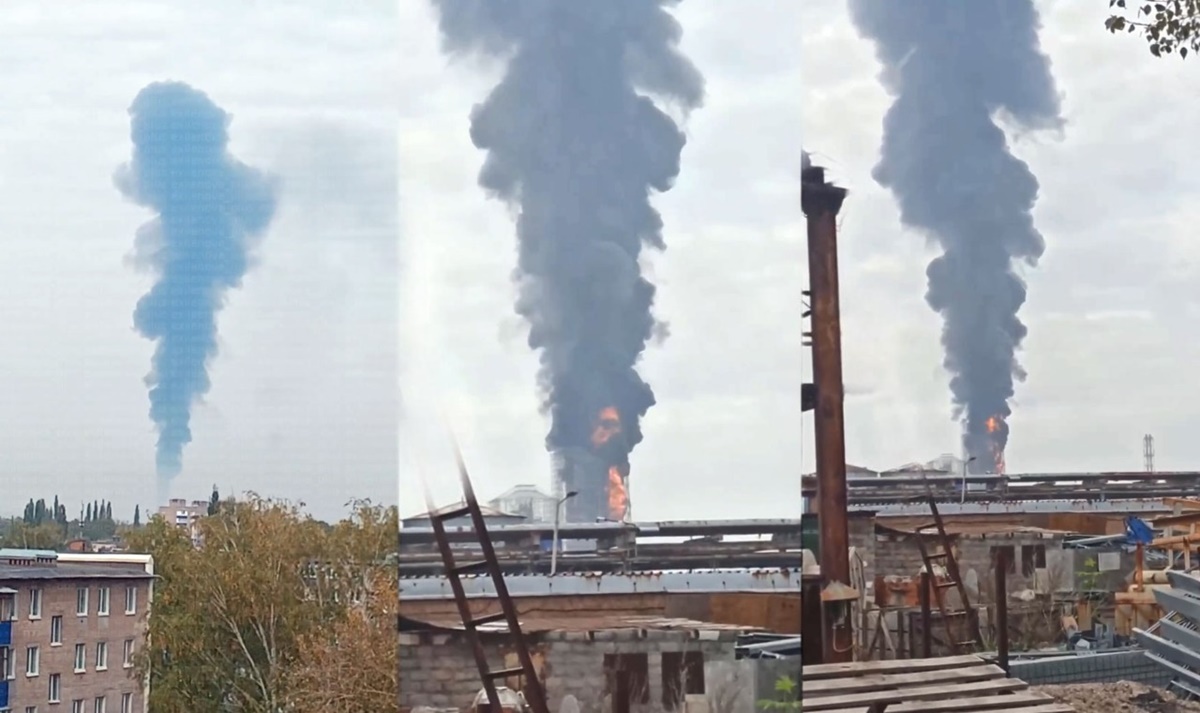 |
Smoke rises from Russia's Neftekhim Salavat petrochemical plant on 18/9. Photo: Euro Maidan Press |
Smoke rises from Russia's Neftekhim Salavat petrochemical plant on 18/9. Photo: Euro Maidan Press
Russian officials say the Ukrainian attacks have not affected the country's oil industry. In August, Kremlin spokesman Dmitry Peskov also reassured that the Russian fuel market was "stable and the situation is under control".
But Russian state media reported gasoline shortages in some areas of the Far East and the Crimean Peninsula, as Ukraine recently intensified long-range attacks on oil refineries.
Primpress, the official portal of the Primorye region, which borders North Korea, reported in August that people were queuing at local gas stations. Gasoline prices have risen to about 78 rubles (nearly 1 USD) per liter, while the average monthly salary in the region is about 1,200 USD. Some drivers even offered gasoline online for more than 2.7 USD per liter.
Sergey Vakulenko, an oil expert at the Carnegie Center for Russia and Eurasia, based in Berlin, Germany, said the Reuters report may be accurate, but it is difficult to assess the overall damage because Russian refineries are constantly being repaired.
"The question is whether Ukraine can maintain the pace, scale, and damage of the attacks," he added. "If they can, and if Russia can't boost its air defenses, the balance will no longer be in Moscow's favor".
Gasoline prices in Russia have increased by more than 20% compared to the same period last year, said Mykhailo Gonchar, president of the Center for Global Studies Strategy XXI in Kyiv, a think tank focused on energy issues.
“We are seeing a fuel crisis emerging in Russia and it shows no signs of stopping," he said. "The summer travel season is over, farmers have finished harvesting, and fuel demand should be decreasing, but the fuel crisis in Russia continues. Ukraine’s attacks are clearly effective and having an impact on Russia”.
The Institute for the Study of War, based in Washington, said on 16/9 that Ukraine's campaign to attack Russian energy infrastructure, "especially oil refineries", "is significantly impacting Russian military funding and exacerbating fuel shortages in the country".
President Vladimir Putin earlier this month declared that Russia's attacks on Ukrainian energy infrastructure were primarily in response to a new offensive from Kyiv. "We tolerated it for a long time while Ukrainian forces constantly attacked our energy facilities," Putin said. "Then we began to retaliate. And of course, we are responding seriously".
Ukrainian UAV strikes the Ufa oil refinery in central Russia on 13/9. Video: X/Mendel
On 17/9, power was cut to 45 settlements in Ukraine's Kirovohrad region after a nighttime UAV attack from Russia. Earlier this month, 19 Russian UAVs attacked the Trypilska thermal power plant outside the capital, Kyiv. The plant was severely damaged in another attack in 4/2024 and is being rebuilt. Serhiy Nahornyak, a member of the Ukrainian Parliament's Energy Committee, said the latest attack rendered the restoration efforts at Trypilska "meaningless".
However, according to Victoria Voytsitska, former secretary of the committee, the most vulnerable part of Ukraine's energy system is its gas infrastructure. The challenge lies in the fact that the gas processing system has many stages, from production and storage to distribution, and it is all scattered, making it difficult to defend.
For example, Ukraine has thousands of gas distribution facilities across its territory to supply population centers. "If Russia intensifies attacks on those points, gas shortages could occur. Supplies to cities, towns and villages will be cut off. Building a protection system for such facilities costs billions of dollars, a lot of manpower and time, and we don't have those resources right now. So, we really need to prepare," Voytsitska noted.
According to Sergii Koretskyi, CEO of Naftogaz, Ukraine's state-owned oil and gas company, Russian attacks on Ukrainian energy facilities began escalating in February, resulting in losses of about 42% of daily gas production. Then, in June and July, "the oil refining system was completely destroyed".
Some refining capacity has been restored, but Koretskyi said they are likely to face new attacks. "It is very likely that Russia will launch massive attacks on energy facilities in the next few days, right before the heating demand increases in winter," he said.
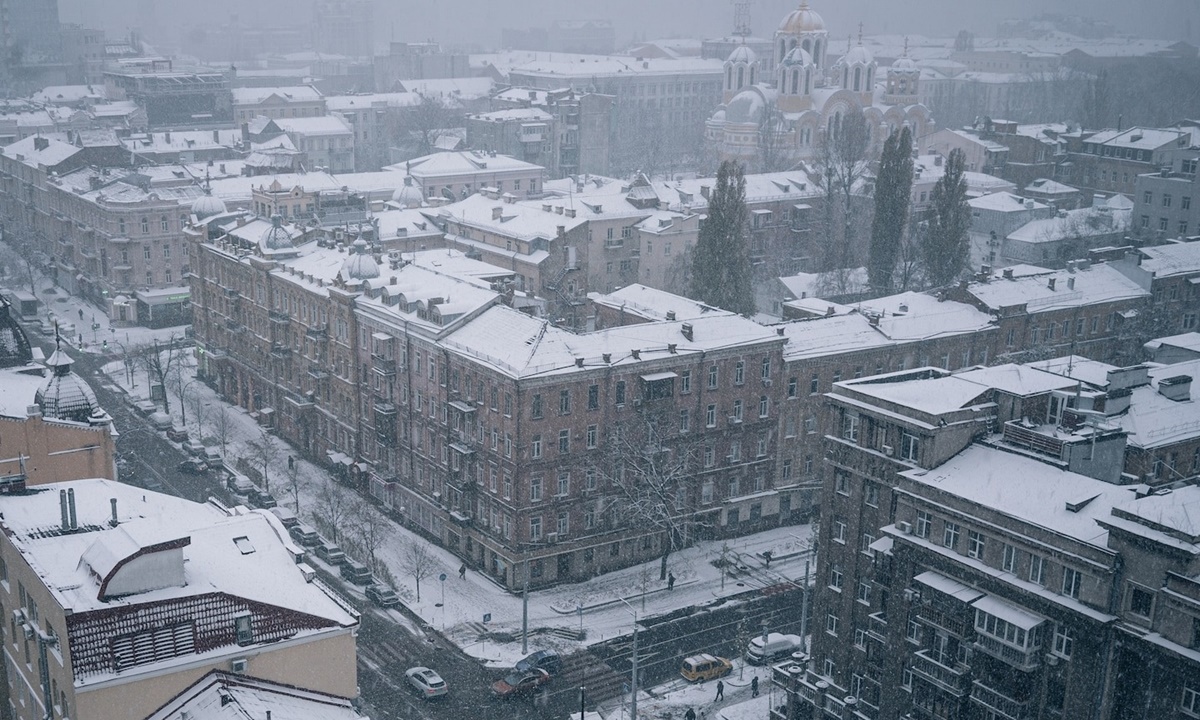 |
A snowstorm in Kyiv, Ukraine, in 2023. Photo: Washington Post |
A snowstorm in Kyiv, Ukraine, in 2023. Photo: Washington Post
Koretskyi believes such attacks are Moscow's retaliation for Ukraine cutting off the flow of Russian gas through its pipelines in January, due to agreements not being renewed. As a result, Ukraine had to import nearly 6 billion cubic meters of gas from abroad, the highest level in the country's history.
According to him, Ukraine has signed contracts that can meet nearly 95% of the country's gas needs when the centralized heating system is activated on 1/11. To finance these purchases, Naftogaz spent 1 billion USD from its own funds. The European Bank for Reconstruction and Development, the Norwegian government and several other organizations provided 1.5 billion USD.
These efforts may help Ukraine hold its ground if the winter is not too harsh, but if temperatures drop significantly in the coming months, gas will certainly be in short supply, warned Gonchar of the Center for Global Studies Strategy XXI. "No one knows what the winter will be like," he added.
Vu Hoang (According to Washington Post, AFP, Reuters)



